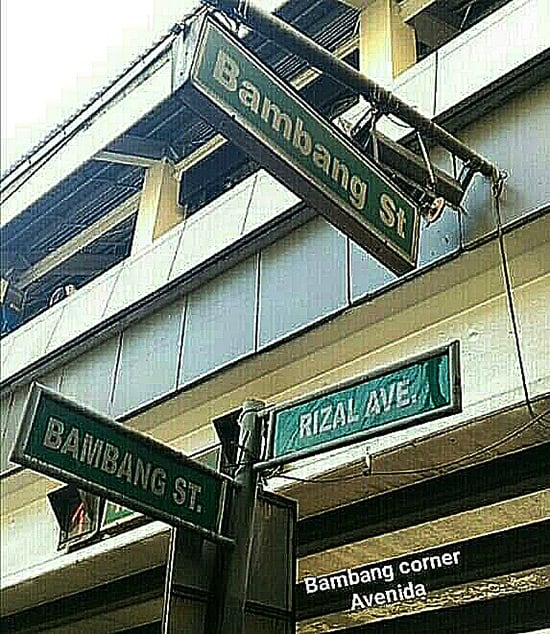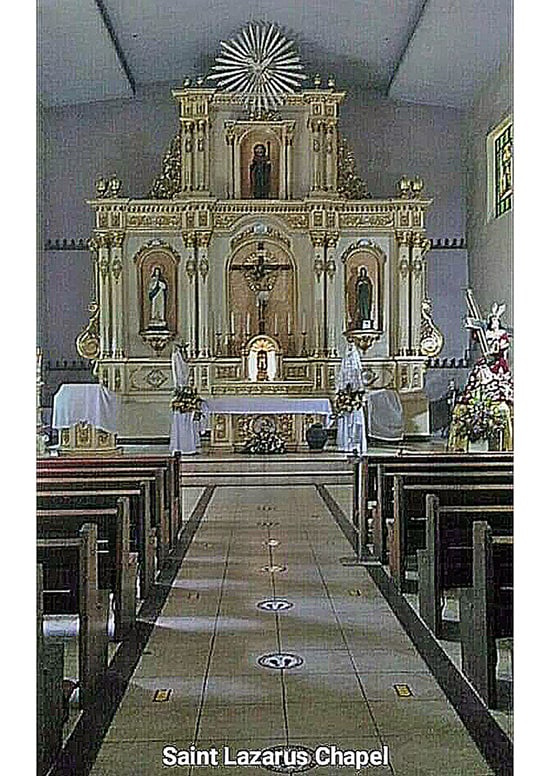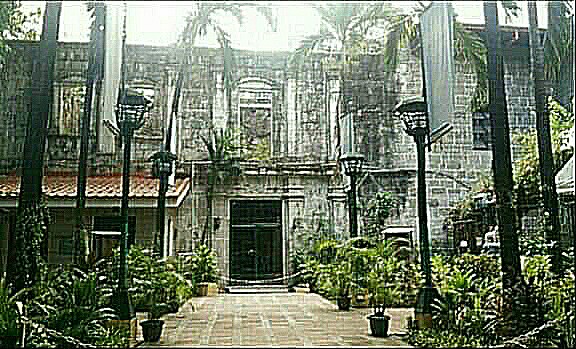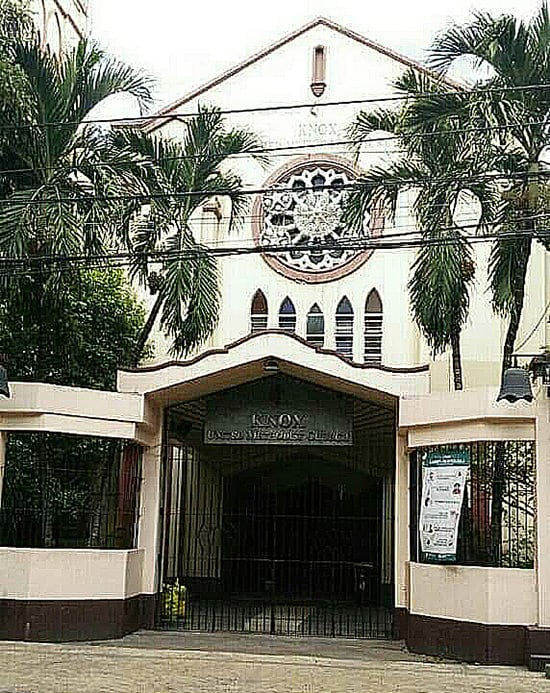Going downtown? That was the question for most weekender Manileños up until the late ‘70s when malls were just starting to sprout. Downtown Manila meant Quiapo, Sta. Cruz, and Binondo. While Quiapo had retail shops and Binondo had wholesale outlets, Sta. Cruz had theaters, department stores, hospitals, churches, temples, religious stores, thrift stores, and cemeteries. It even had a hippodrome, San Lazaro, until it transferred to Carmona, Cavite. It is bordered by Tondo, Binondo, Quiapo, Sampaloc, Grace Park in Caloocan, and La Loma in Quezon City.
Origins, Sta. Cruz church

The Jesuits were the first administrator after the Spaniards claimed the territory. They built Sta. Cruz Church in 1619 and enshrined Our Lady of Pillar in 1643 to serve the predominantly Chinese congregation. This church was designated as the Archdiocesan Shrine of the Blessed Sacrament in 2018 and is now the Mother House of the Sacramentinos. One notable priest is Ezequiel Moreno, patron saint of cancer patients, who was a parish priest here when the church was under the Augustinian Recollects.
Sta. Cruz Church was almost completely destroyed during the Battle of Manila but that did not stop the Manila Symphony Orchestra, under the baton of Herbert Zipper, from performing in the ruins of Sta. Cruz Church in May 1945. It was the first post liberation concert and was described as Manila’s most unusual concert ever. In attendance were Jean MacArthur, wife of Douglas MacArthur, Philippine Chief of Staff Basilio Valdez, and Archbishop Michael O’Doherty. This concert was reenacted in 2015 at the Meralco Theater. In 1957, the church was reconstructed in the California Spanish Mission style with Baroque ornamentation.

The hospitals and the franciscans
Aside from the Jesuits, the Franciscans were instrumental in the development of Sta.Cruz, particularly in the establisment of hospitals. In 1577, San Lazaro Hospital was established in Intramuros primarily for leprosy patients, but also for those with other ailments. It moved to Sta. Cruz in 1784 and is considered one of the oldest hospitals which catered to the indigents. It was formerly administered by the Franciscans. The most prominent Franciscan during that time was Felix Huerta. He didn’t only develop San Lazaro Hospital, he also founded the Monte de Piedad Savings Bank, which is considered the oldest savings bank in the Philippines. It was meant to help the poor by letting them borrow money with only a small interest. It also functioned as a pawnshop. The Franciscan friar was also resourceful in unearthing the almost forgotten donation of Francisco Carriedo, which was used for the establishment of Manila’s water system.
The other hospitals
Another hospital in the San Lazaro Compound is the Jose Reyes Medical Center. It was established as a children’s hospital and was managed by the legendary Dr. Fe del Mundo. During the Battle of Manila, it was transformed into an emergency hospital. In 1956, it transferred to the San Lazaro compound and is now a general tertiary level hospital and a medical training center.

One hospital with a particular specialization is the Dr. Jose Fabella Memorial Hospital, the National Maternity Hospital. This hospital is considered a “baby factory” as no other hospital in the country delivers as many babies as Fabella. It also has a school of midwifery.
One of the oldest hospitals founded during the Spanish period is the Chinese General Hospital. It is supported by the Philippine Chinese Charitable organization, which was founded in 1878.
The graveyards (3 cemeteries)
When I started working as a tour guide, I found it unusual to include the Chinese Cemetery as part of the Manila itinerary. It is only now that I appreciate the architectural wonders of some of the mausoleums there. There are memorials for Chinese-Filipino guerillas during WWII and for the victims of the Ruby Tower collapse in 1968. Apolinario Mabini used to be buried here until his remains were transferred to Batangas.
Biggest among the three cemeteries is the Manila North Cemetery. Famous personalities are buried here, such as American Governor Francis Harrison; Presidents Sergio Osmena, Manuel Roxas, and Ramon Magsaysay; Mayors Arsenio Lacson and Antonio Villegas; Senator Claro M. Recto; actor Fernando Poe Jr.; and boxer Pancho Villa. The prominent clans of the Tuasons and the Nakpils also have their final resting place here. There are dedicated plots for Freemasons, heroes of the Philippine Revolution, the Boy Scouts who died in the 1968 plane crash, Jews, and Thomasites.
The third cemetery is the La Loma Catholic Cemetery. It is under the Diocese of Caloocan, although its southern part is still part of Manila. A very interesting structure here is the La Loma Catholic Cemetery Chapel, also called St. Pancratius or Pancracio in Spanish — but you have to differentiate it from the new St. Pancratius Chapel in front of the cemetery. This structure has been on the list of Manila’s scariest places for a good reason. In July, Philip Paraan of Escuela Taller informed me that the chapel will be rehabilitated so that it will be fully functional as envisioned by the Diocese of Caloocan.
Other places of worship, religious items
The SVD (Society of Divine Word) established Espiritu Santo in Tayuman and San Roque in Blumentritt. In 1973, the SVD turned over Espiritu Santo to the diocese. Eventually, it was granted the title of Archdiocesan Shrine of Espiritu Santo. There is a parochial school with the same name. You will also find in Tayuman the SVD Catholic Trade and other religious stores selling rosaries, bibles, novenas, and religious statues.

LRT and Avenida
Sta. Cruz dominates the Avenida side of the LRT from Blumentritt, Tayuman, Bambang, Doroteo Jose, and Carriedo. Before the war, Avenida (Rizal Avenue) was known for its Japanese stores and massage parlors. With the construction of the LRT, the area dimmed but business recovered and remained brisk. Bambang is known for second hand clothes and, most of all, cheap medical equipment. Blumentritt, named after Rizal’s friend, has a bustling market and a train station. Doroteo Jose, named after a Filipino who led a movement against corrupt Spanish officials, is connected with LRT 2. From the connecting bridge, you can see portions of Manila City Jail. Carriedo, named after the Spanish benefactor, is the jump-off point to Escolta, Sta. Cruz, and Quiapo. Nowadays, I still go back to Avenida to buy watches and big paper calendars at the start of the year. Good Earth has been revived while Manila COD was not. SM Quiapo with its eternal sales still exists.
The glory days of the theaters are gone. Manila Grand Opera is now a hotel. There is a marker stating that the inauguration of the First Philippine Assembly in 1917 was held there. There is no trace of Clover Theater, which produced the likes of Dolphy and Pugo. Roman Super Cinema, the first carpeted cinema with a wide screen, is now Isetann Department Store. Odeon, one of the biggest theaters, is now a mall. Most of the movie houses now are showing B movies. Who will remember the Pablo Antonio designed Forum, Galaxy, and Scala theaters? Who will remember Juan Nakpil’s State Theater, with its murals done by Botong Francisco, Galo Ocampo, and Victorio Edades? What remain are the Carriedo Fountain, the Roman Santos Building, Monte de Piedad, and several ancestral houses. There are still “surprising sights” like the relatively unknown San Lazaro Chapel, with ruins inside the San Lazaro Hospital, and the ancestral house restaurant Lola Gening’s at San Lazaro St.
Cruising Sta. Cruz may not be smooth sailing but it is well worth it for the bargains and the nostalgia.
As Petula Clark has sung:
“When you’re alone and life is making you lonely, you can always go —downtown!”
Article and Photo originally posted by The Philippine Star – Property Report PH last July 16, 2021 and written by JP Ordona.







More Stories
Weekend wanderer: This walk in Manila is a trip to art and to our past
Enjoy no-frills camping in the great outdoors in Tanay
Landco Pacific raises the bar for premium resort and leisure living